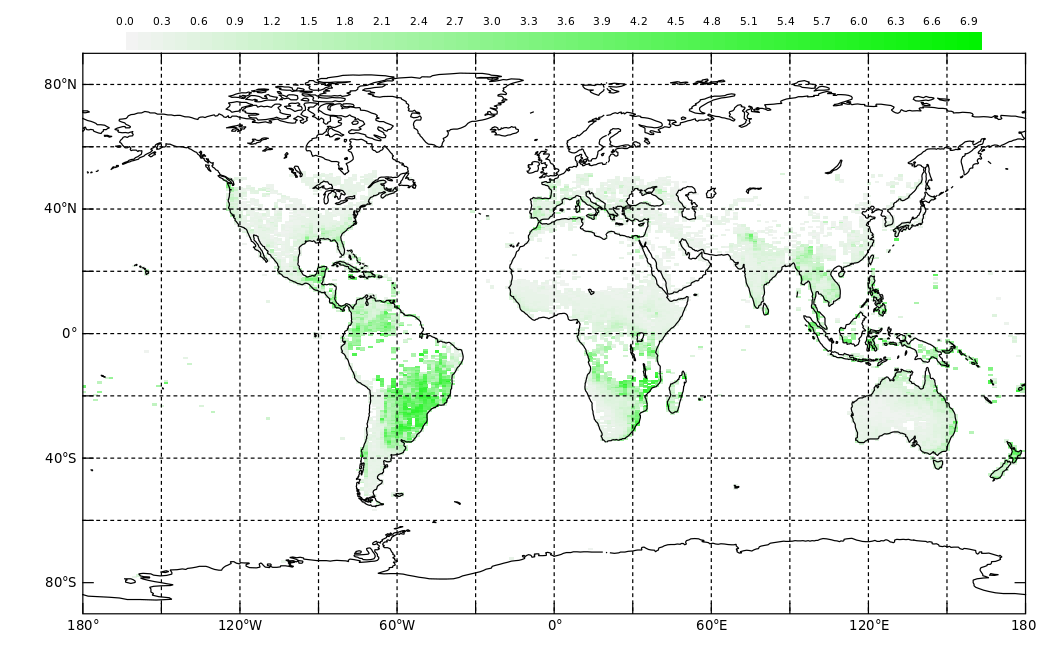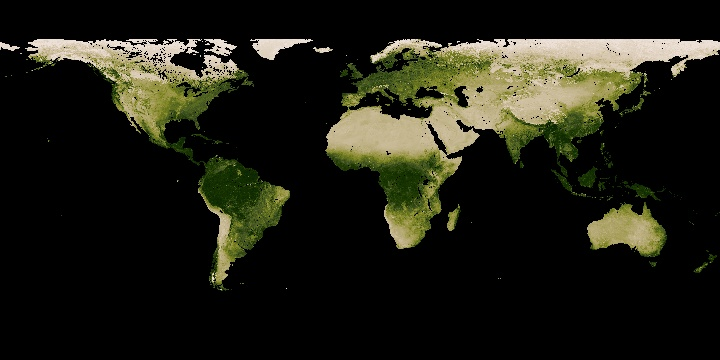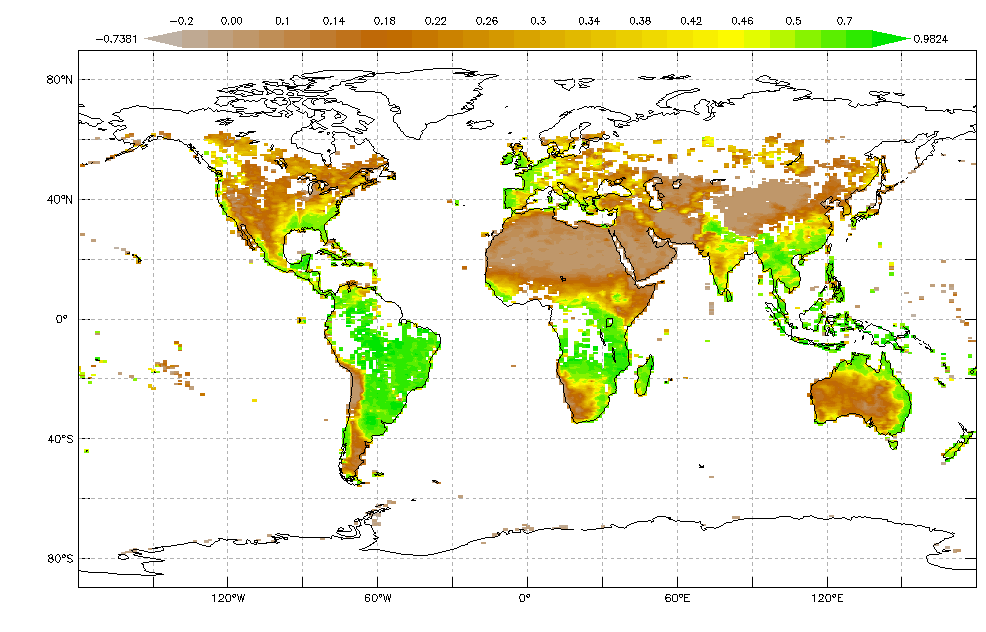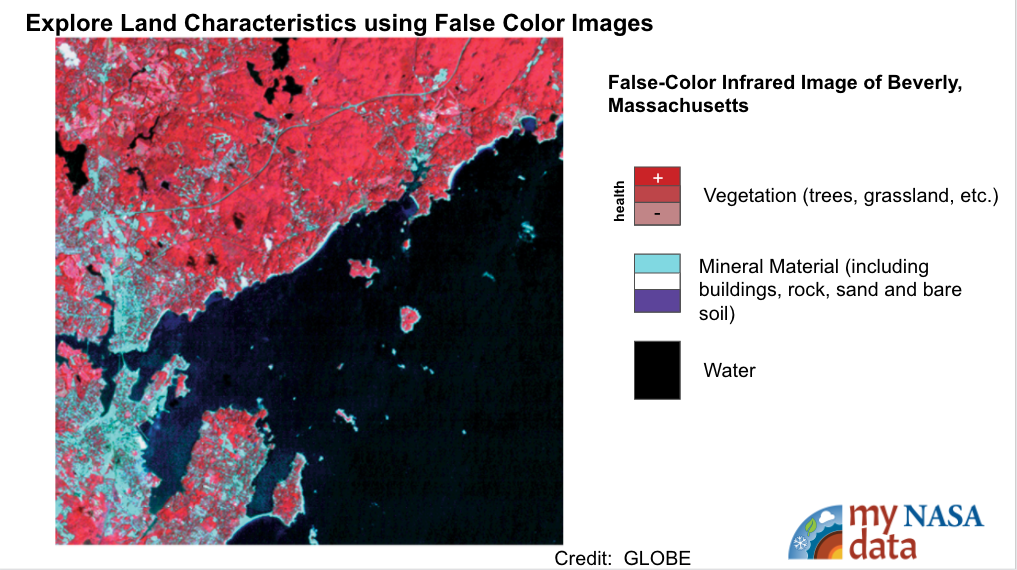Plant Growth Patterns
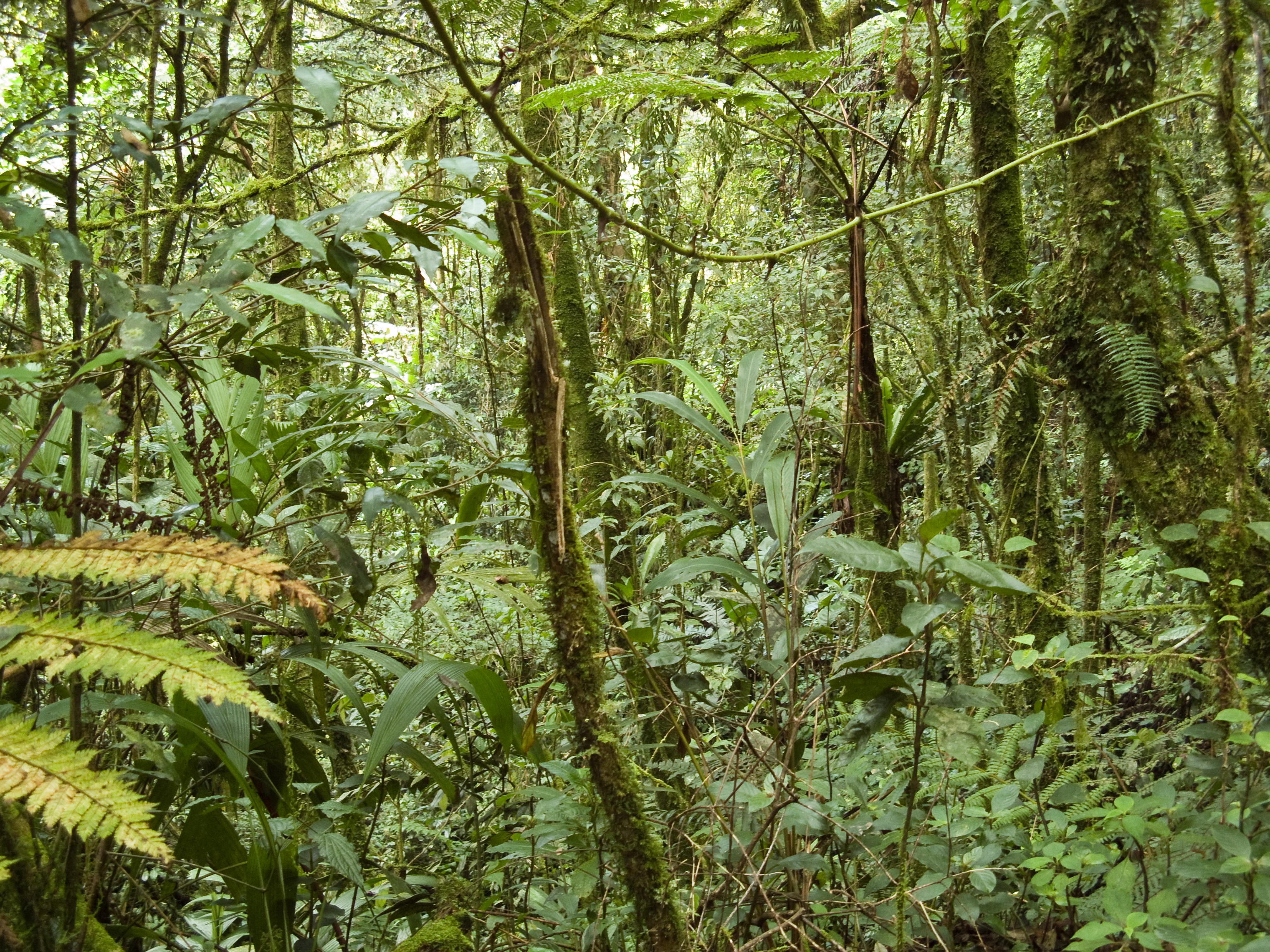
We often take the Biosphere, especially its plants and trees, for granted; however, this important sphere also supports almost every aspect of our lives. The plants of the Biosphere feed us, clothe us, absorb carbon dioxide, provide us with oxygen, and give us building materials and medications. If our vegetation is impacted, human health, economy, and environments are all affected.
For the last 20 years, NASA has continuously observed the Biosphere. From rainforests to croplands, boreal forests to mangroves, NASA scientists investigate the role of plants in the Earth System. Satellites observe global-scale patterns of vegetation that scientists use to study changes in plant growth as a result of climate and environmental changes, as well as human activity. Photosynthesis plays a big role in removing carbon dioxide from the atmosphere and storing it in wood and soils, so mapping vegetation is a key part of studying the carbon cycle. Farmers and resource managers also use satellite-based vegetation maps to help them monitor the health of our forests and croplands.
An important map based on NASA observations showing plant growth changes is a map showing the greenness of vegetation. On these maps, vegetation is pictured as a scale, or index, of greenness. Greenness is based on several factors: the number and type of plants, how leafy they are, and how healthy they are. In places where foliage is dense and plants are growing quickly, the index is high, represented in dark green. Regions where few plants grow have a low vegetation index, shown in tan. The index is based on measurements taken by the Moderate Resolution Imaging Spectroradiometer (MODIS) on NASA’s Terra satellite. Areas where the satellite did not collect data are gray.
The most obvious pattern that the maps show is a global one: the seasonal cycle of plant growth. Between the equator and the poles, the vegetation greenness at any give location rises and falls as the season's change. Vegetation greenness is high around the equator all year long, where warm temperatures are common, and rainfall and sunlight are abundant.


